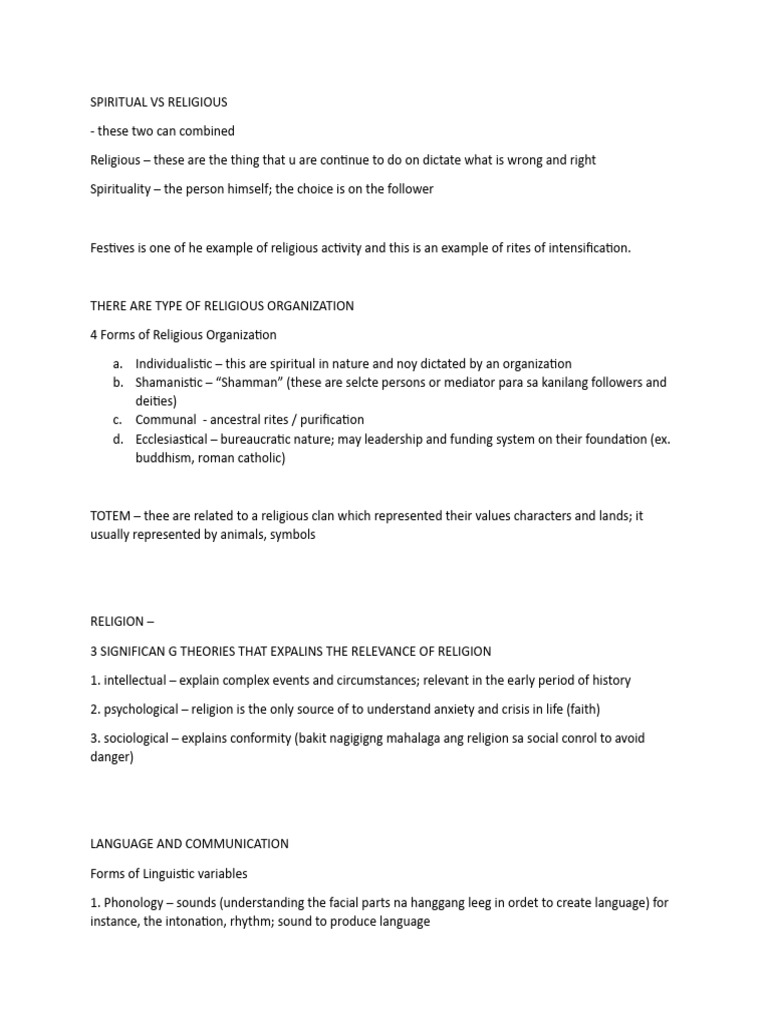In the vast expanse of human inquiry, the concepts of spirituality and religiosity have emerged as two vital, yet distinct, paradigms. Both terms often elicit a labyrinth of thoughts and emotions, which evokes the playful question: Are they two sides of the same coin, or are they entirely disparate entities? This article ventures into the nuanced terrain of Baha’i teachings to delineate the fundamental differences between spirituality and religiosity. It aims to equip readers with the analytical tools to navigate this intricate subject.
To commence this exploration, it is crucial to define and understand the terminology at hand. Spirituality can be seen as an individual’s experience of the transcendent, a deeply intrinsic journey toward understanding the self and its connection with the cosmos. It often transcends conventional frameworks and encourages personal exploration of divine principles. On the other hand, religiosity pertains to the structured practices, beliefs, and communal aspects that often encompass spiritual beliefs. It offers a codified doctrine, rituals, and collective worship, which provide clearer pathways for the believer.
One of the primary tenets of Baha’i teachings is the integration of spirituality and religion. The founder of the Baha’i Faith, Baha’u’llah, posits that true religion should inspire and elevate the spirit. This perspective implies that genuine spirituality cannot exist devoid of religious structure, as the latter serves as a compass guiding individuals in their quest for the Supreme Being.
To delve deeper, consider the intentions behind spiritual practices versus religious observances. Spirituality tends to prioritize personal enlightenment and self-realization. It encourages practitioners to seek inner peace, enlightenment, and understanding through introspection, meditation, and other contemplative activities. In contrast, religious practices focus on communal worship and adherence to ethical guidelines and doctrines dictated by sacred texts. This often involves rituals, ceremonies, and prayer that foster a sense of belonging and identity within a collective.
Consequently, the question arises: Can one have a robust spiritual existence without the scaffolding of religious frameworks? While many individuals might argue in favor of an independent spiritual journey, the Baha’i teachings contend that the absence of a structured religious foundation could lead individuals astray or foster misguided beliefs. Thus, Baha’i principles assert that spirituality flourishes within the bounds of an authentic religious framework, ensuring that personal interpretations do not diverge into extremes.
Furthermore, the challenges of distinguishing spirituality from religiosity may become more apparent when considering the manifestations of each in daily life. Spirituality might manifest as a personal connection with nature, an appreciation for the transformative power of love, or a pursuit of artistic endeavors that evoke higher emotions. Meanwhile, religiosity is often exhibited through participation in organized federations of worship, observance of holy days, and adherence to moral principles outlined by religious authorities.
Nevertheless, just as spirituality can exist independently of organized religion, so too can religiosity become stagnant and unfulfilling if devoid of spiritual vitality. Unfortunately, some individuals may equate rigid adherence to dogma with genuine devoutness, often neglecting the inner transformative power that spiritual practices hold. Baha’i teachings encourage a re-examination of this paradigm, urging adherents to foster a balance wherein both spirituality and religiosity can coexist harmoniously.
With this in mind, it becomes pertinent to reflect on the implications of this balance. The synthesis of spiritual authenticity and religious observance can lead to a more holistic understanding of life, enhanced empathy, and the cultivation of virtues such as compassion, integrity, and justice. Baha’i teachings emphasize the importance of translating spiritual realizations into actionable, transformative social practices. This practical application of faith can become foundational for social justice movements, peacebuilding endeavors, and community cohesion.
For individuals seeking to navigate their journey thoughtfully, several guidelines may assist in differentiating spirituality from religiosity. First, reflect on the motivations driving one’s practices: Are they personal, inward-focused, or are they oriented toward communal expectations and duties? Second, consider the interpretations and applications of the core teachings: Do they promote individual growth and understanding, or do they restrict personal exploration through rigid adherence to traditions? Lastly, assess the emotional and intellectual nourishment derived from each practice. Genuine spiritual experiences often provoke genuine joy, peace, and connection—qualities that may not always align with rigid religious templates.
In conclusion, the teachings of the Baha’i Faith advocate for a balanced interplay between spirituality and religiosity, highlighting their respective merits while offering a caution against extremes. The delineation between the two is not merely academic; it has profound implications for individuals on their spiritual paths. The challenge lies in cultivating an authentic spiritual identity that harmonizes with religious principles, allowing for a richer, more fulfilling connection both with oneself and with the wider community. In a world increasingly polarized by dogma and individualism, the call for a nuanced understanding of spirituality and religiosity has never been more vital. Ultimately, this journey invites all seekers to explore their beliefs with both sincerity and an open heart.
